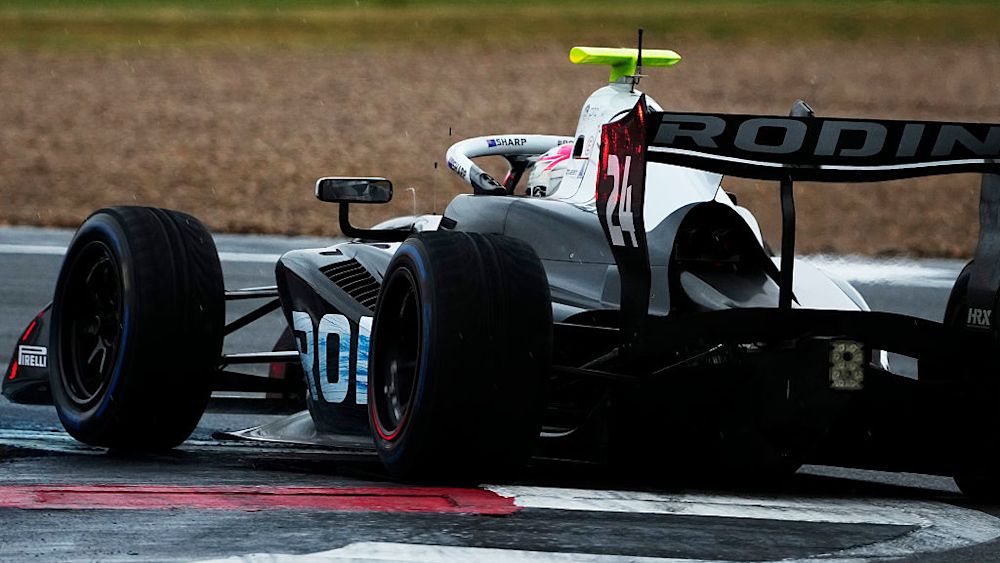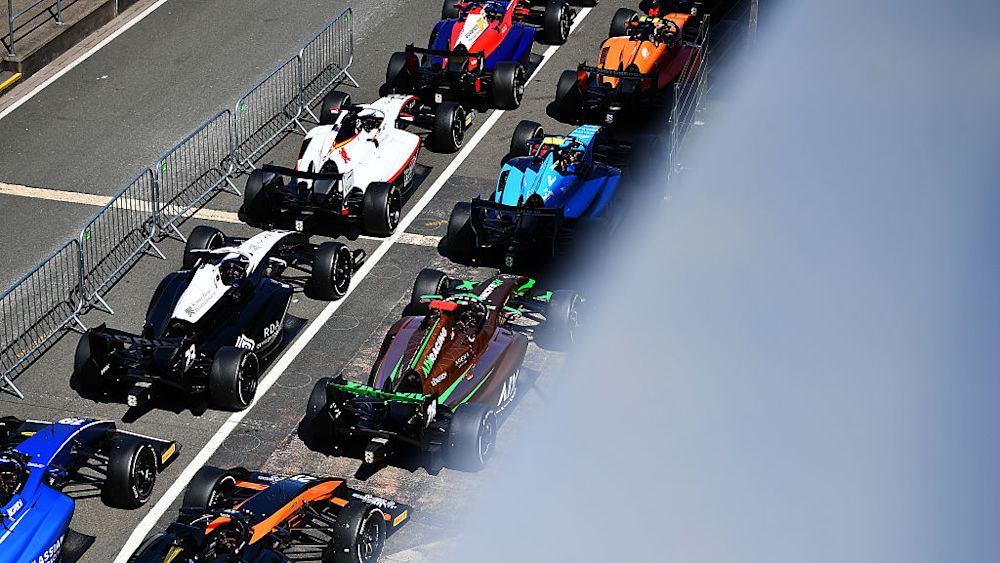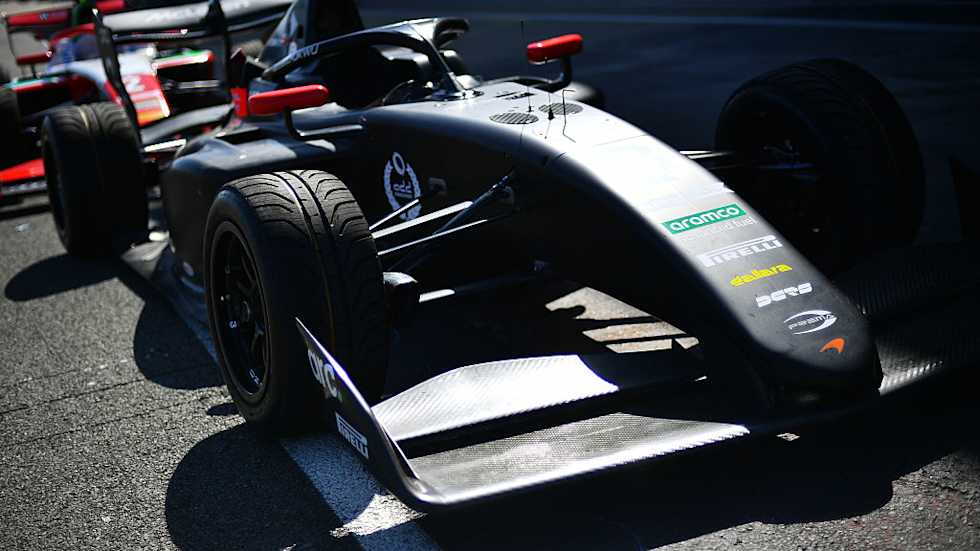The 2025 season has been full of action and intrigue as teams and drivers learn more and more about the new car. From how to set it up to the best way to get pace out of it, everyone’s understanding has taken a step forward since Melbourne.
The new car is a striking departure from the last generation, and new 16-inch profile tyres add up to create an impressive-looking machine. But what is the thinking behind its design?
FIA Formula 3 Technical Director Pierre-Alain Michot breaks down the philosophy behind the ’25 car and the process that went in to designing it.
“The way we designed the new car has been to follow in the footsteps of F2, so mainly making sure that the car has better capability to follow the one ahead in an efficient manner and so they don’t lose too much downforce,” he explains.
“That was the main target we had. But we also wanted to keep the ‘family look’ in line with F1, but with a more conventional rear wing design.”
Michot says that the design started out from a completely new beginning point compared to the old generation of car.
From the “blank page” the new car started from, there were key design elements in mind based around ensuring the drivers were able to experience a step-up from what they would have driven before, along with preparing them up for what’s to come in Formula 2 and beyond.
“We had a blank page beginning with this car. But we benefitted from the previous generation and the F2 car design in the process. But in the end, it’s a completely brand-new car, and none of the components are the same as before.
“We wanted to have a smaller car that looked like an F2 one, but with a simpler floor, less complexity and downforce than in F2.
“That was also to make setting the car up simpler and easier as well. It’s less complex than the F2 car and in terms of design, it’s easier for the teams but we’ve still been able to make it look like an F2 car, it’s just easier to maintain which is good for the teams and the drivers.”
READ MORE
Those points had to be hit whilst still keeping the complexity relatively simple, enabling teams to learn the car quickly.
It also had to be similar enough to the F2 and F1 cars of the current generation that the lineage of the F3 car was obvious, though with its own unique identity.
Michot adds that from the front to the rear of the car, it has all been designed with that FIA pyramid pathway in mind.
“In the end, the general philosophy we ended up having at the beginning of the project and in the initial sketches were still present in the end.

“For sure, there was some iterating to make sure that it was as efficient as planned and performed as expected, because from the first drawing to the last produced part, we had to make sure everything worked well together.
“From the front wing to the floor to the rear wing, it all had to be efficient as was part of the overall package and process. So, we still had to have a front wing looking similar to F1, and the sidepod mimicking the latest F1-spec without being as complex, along with having a rear wing which worked in terms of downforce and DRS efficiency.”
The current generation F2 car introduced last season came with two rear wing specifications, standard and low downforce configurations that teams could choose between based on circuit requirements.
READ MORE: Bruno Michel Double-Header Debrief: The twists keep coming in closely fought title battle
While there was a consideration for the new F3 car to utilise a similar design philosophy, ultimately it was decided that things should be kept simple, with the focus on complexity based around other areas of the car.
“We evaluated it at the time, but in the end, we wanted to keep it as a single concept for the rear wing.
“We had to make sure that we could go from a low downforce set-up used at Monza to the highest downforce set-up. So, in the end, the wing that we designed was just to make sure we could accomplish this with a single configuration.”

The design has revamped the aerodynamic behaviour of the car, with a simpler version of the F2 floor, which itself is based closer to those used in Formula 1, and changed how teams and drivers reach the limits.
Cornering speeds in particular have been improved with the new car, as drivers have noted they’re able to push more through the turns compared to the previous generation.
“When the drivers arrive in F3 from other categories further down the pyramid, they reach this level and it’s another level of downforce.
“They need to accommodate for that added corner speed, and when they go up, it’s another step in a car that’s even more efficient. It’s about being able to give them a bit of a step-up and more to account for in their driving.
“The positivity we’ve had is really good”
“So, in the end, the car is slightly more efficient overall as a package. On the chassis side, we have a better handling car, and that’s also down to the low-profile tyres, because of the lower side wall. It means that the cars are better through mainly high-speed corners.”
Overall, there has been a positive reaction to the appearance and performance of the new car, with the larger wheels and striking wing designs modernising the F3 car and moving it closer to its older siblings in F2 and F1.
Michot says that it has been gratifying to see the enthusiasm for the new car, and that the ’25 machine is performing as expected.
“The positivity we’ve had is really good. Because the balance of the car, the dimensions plus the 16-inch wheels, the shape of the sidepods mean it looks quite aggressive, but it is still good looking and most importantly, efficient.
“It’s still in its first year, so we will see if we have to do some evolution or modification. But from what we’ve seen on track so far, it looks to be as efficient and working as expected.”
